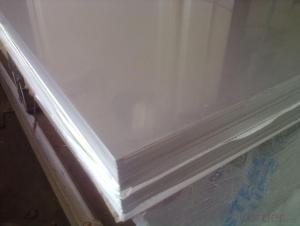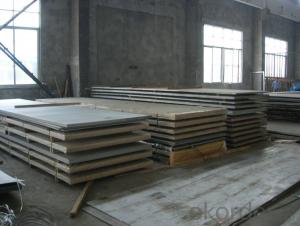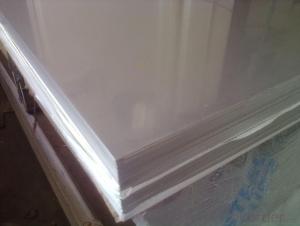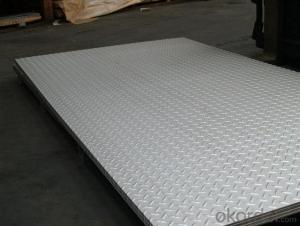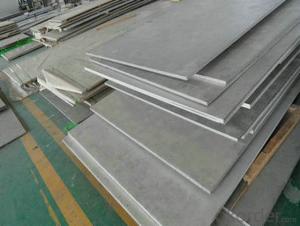Stainless Steel Sheet with Small Size #4 Polish Treatment
- Loading Port:
- Shanghai
- Payment Terms:
- TT OR LC
- Min Order Qty:
- 10000 m.t.
- Supply Capability:
- 5000000 m.t./month
OKorder Service Pledge
OKorder Financial Service
You Might Also Like
Hot sale stainless steel sheet 201/202/304/304l/316/316l/430
Description of Stainless Steel Sheet:
Description | steel sheet,hot rolled steel sheet,cold rolled steel sheet, steel sheet,sheet,steel plate |
Standard | ASME, ASTM, EN ,BS,GB,DIN, JIS etc |
Application | Steel sheet applies to construction field, ships building industry, petroleum & chemical industries, war and electricity industries, food processing and medical industry, boiler heat exchanger, machinery and hardware fields. |
Packaging | Standard export sea-worthy packing |
Delivery time | 10-30 days |
Quality | No.1 |
Productivity | 500 tons/Day |
Note | Our company has cooperative relation between the domestic agents. Stainless steel sheet can be made accordingto the customers requirements. Fasten delivery. Quality assured. |
Contacts | If you have any question,please feel free contact me. |
Stainless steel sheet surface finish characteristics
Surface finish | Characteristics and application |
2B | The surface brightness and flatness of no2B is better than no2D. then through a special surface treatment to improve its mechanical properties,No2B could nearly satisfy comprehensive uses. |
No.1 | Polished with abrasive belt of grit#100-#200, have better brightness with discontinuous coarse stria, used as inner and external ornaments for building, electrical appliances and kitchen utensils etc. |
No.4 | Polished with abrasive belt of grit #150-#180,have better brightness with discontinuous coarse stria, but thinner than No3, are used as bathtub buildings inner and external ornaments electrical appliances kitchen utensils and food processing equipment etc. |
HL | Polished with abrasive belt of grit #150-#320 on the NO.4 finish and has continuous streaks, mainly used as buildings ornaments elevators, door of building, frontal plate etc. |
BA | Cold rolled, bright annealed and skin-passed, the product have excellent brightness and good reflexivity like mirror, kitchen apparatus, ornament etc. |
8K | The product have excellent brightness and prefer reflexivity can to be the mirror. |
Main Features of stainless steel sheet :
•Escalator, Elevator, Doors
•Furniture
•Production tools, Kitchen appliances, freezers, cold rooms
•Auto Parts
•Machinery and Packaging
•Equipment and Medical devices
•Transport system
Product Details:
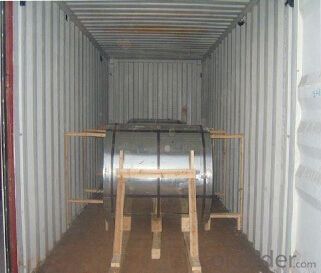
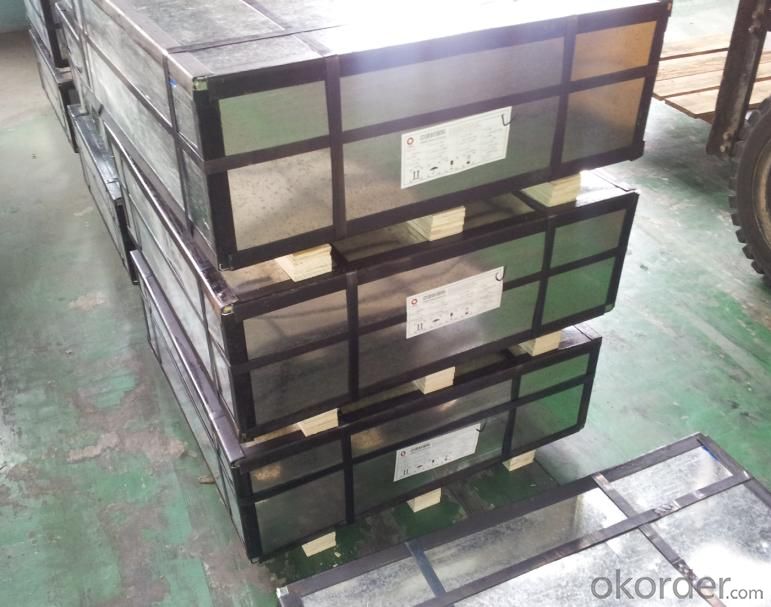
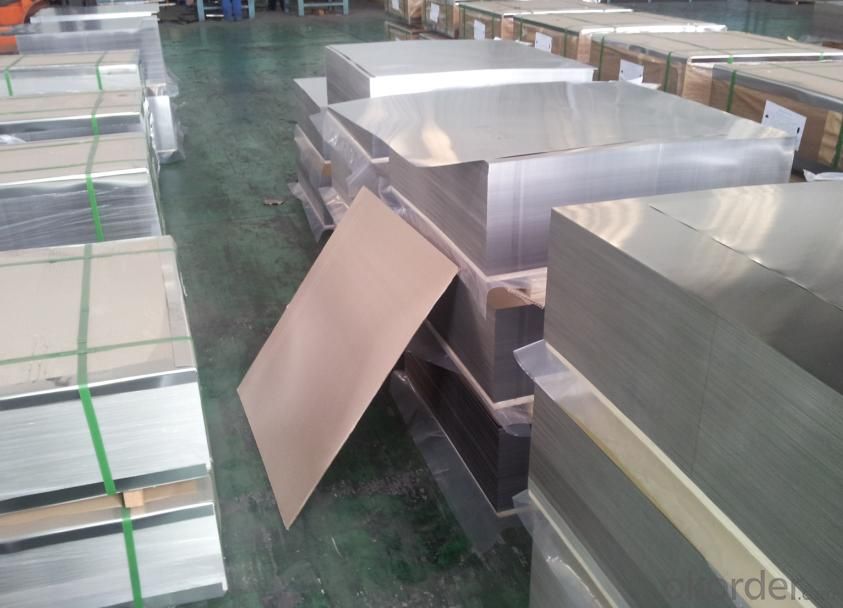
Sandard Seaworth Packing(wooden packing with water proof paper)
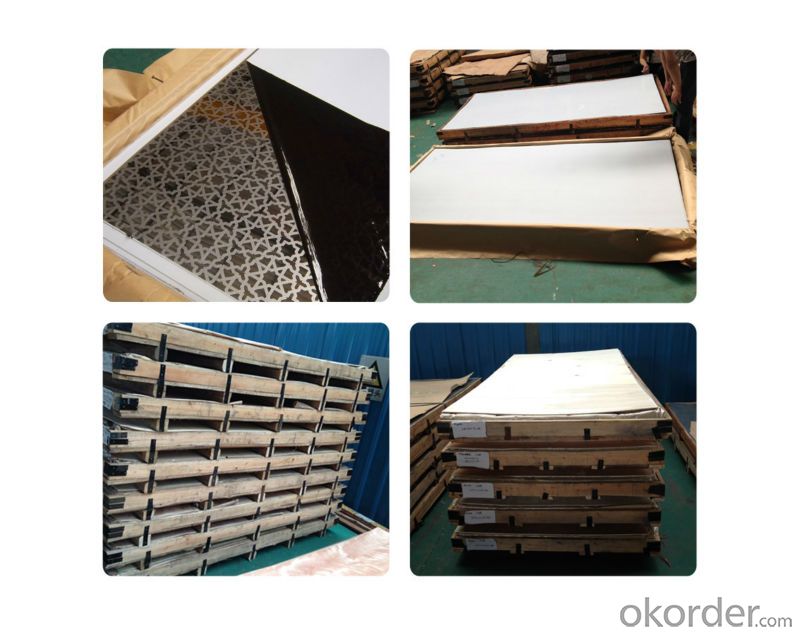
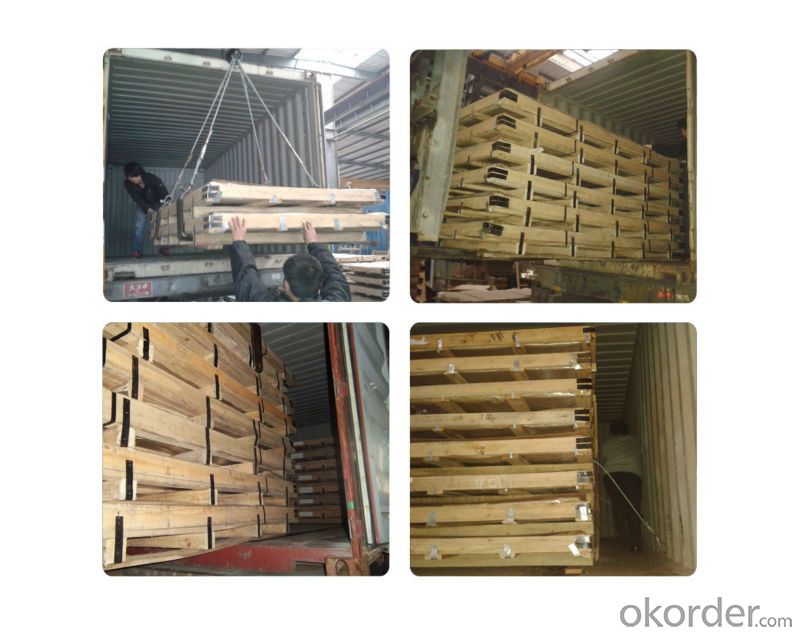
FAQ:
What are we supplying now?
We are specialized in producing stainless steel coil, stainless steel (plate/sheet), and duplex stainless steel for a
prelonged period. We are currently doing grade of steel of 201/202,304/304L, 310S/309S/316L/316Ti/321,410/4
20/430/444/443/409L, and 904L
2. How Many years experience do we have?
We have been exported to more than 20 countries in the past 15 years.
3. How long do we usually reply your request?
We always reply our customer within 24 hours.
If you have any question about stainless steel sheets,donot forget to sending the email to Us! You will get the competitive Price and have a very good experience about the Buying Process! CNBM International Corporation is always your trustful friend!
- Q:Can stainless steel sheets be used in marine environments?
- Yes, stainless steel sheets can be used in marine environments. Stainless steel is highly resistant to corrosion, making it suitable for marine applications where it will be exposed to saltwater and high humidity. It is commonly used in marine vessels, offshore platforms, and other structures that require durability and resistance to rust and corrosion.
- Q:How do you calculate the weight of a stainless steel sheet?
- To calculate the weight of a stainless steel sheet, you need to know its dimensions (length, width, and thickness) and the specific gravity of stainless steel. First, determine the volume of the stainless steel sheet by multiplying the length, width, and thickness together. This will give you the volume in cubic units. Next, multiply the volume by the specific gravity of stainless steel, which is typically around 7.93 g/cm³ (grams per cubic centimeter). This will give you the weight of the stainless steel sheet in grams. To convert the weight to a different unit, such as kilograms or pounds, divide the weight in grams by the appropriate conversion factor. For example, to convert grams to kilograms, divide by 1000. To convert grams to pounds, divide by 453.59237. It is important to note that this calculation provides an estimate of the weight, as there may be slight variations in the specific gravity of stainless steel depending on the exact alloy and composition of the sheet.
- Q:How long do stainless steel sheets last?
- Stainless steel sheets are renowned for their durability and long-lasting nature. The lifespan of these sheets can vary depending on factors like the grade and quality of the stainless steel, environmental conditions, and maintenance practices. However, with proper care and normal circumstances, stainless steel sheets can endure for many decades or even a lifetime. The longevity of stainless steel is greatly influenced by its ability to resist corrosion. This is made possible by the presence of chromium, which forms a passive layer on the surface of the material, safeguarding it from rust and corrosion. This natural protective layer enables stainless steel sheets to withstand harsh environmental conditions, including exposure to moisture, chemicals, and extreme temperatures. Moreover, the grade of stainless steel also plays a role in its lifespan. There are different grades available, such as 304, 316, and 430, each offering varying levels of corrosion resistance. Higher grades, particularly 316 stainless steel, exhibit greater resistance to corrosion and are commonly used in marine and highly corrosive environments, ensuring a longer lifespan. To maximize the lifespan of stainless steel sheets, proper maintenance is crucial. Regular cleaning with mild detergents and non-abrasive materials is necessary to eliminate dirt, grime, and contaminants that can degrade the protective layer of stainless steel. Additionally, it is important to avoid contact with harsh chemicals or abrasive materials that can scratch or damage the surface. While stainless steel sheets have an impressive lifespan, it is important to acknowledge that their durability is not limitless. Over time, factors like wear and tear, exposure to severe conditions, or improper maintenance can gradually diminish the protective layer of stainless steel and reduce its lifespan. Nonetheless, with appropriate care and maintenance, stainless steel sheets can be a cost-effective and enduring choice for various applications, including construction, automotive, and household products.
- Q:Are stainless steel sheets suitable for cryogenic applications?
- Yes, stainless steel sheets are suitable for cryogenic applications due to their excellent mechanical properties, low thermal conductivity, and resistance to temperature extremes. Stainless steel can maintain its strength and integrity even at extremely low temperatures, making it an ideal material for cryogenic storage tanks, pipelines, and equipment.
- Q:How do you determine the best thickness of stainless steel sheet for a specific application?
- To determine the best thickness of stainless steel sheet for a specific application, several factors need to be considered. Firstly, the intended use of the stainless steel sheet is crucial. Different applications require different levels of strength, durability, and resistance to corrosion. For example, if the sheet will be used in a high-stress environment or exposed to harsh chemicals, a thicker gauge stainless steel sheet would be suitable to ensure sufficient strength and corrosion resistance. Secondly, the size and dimensions of the application should be taken into account. Larger structures or components may require thicker stainless steel sheets to maintain structural integrity and prevent deformation under load. Conversely, smaller or more delicate applications may benefit from thinner sheets to reduce weight and improve flexibility. Moreover, considering the expected lifespan and maintenance requirements is essential. Thicker stainless steel sheets generally offer greater longevity and can withstand more wear and tear. However, if the application requires frequent cleaning or maintenance, a thinner sheet may be more practical. Additionally, budgetary constraints should be taken into consideration. Thicker stainless steel sheets tend to be more expensive due to the increased material cost and manufacturing complexity. Balancing the desired performance with available resources is crucial to determine the most cost-effective thickness. Lastly, consulting industry standards, guidelines, and experts can provide valuable insights. Various industries have specific requirements for stainless steel sheet thickness based on their experiences and safety standards. Engaging with professionals can help to ensure the chosen thickness meets the necessary specifications and regulations. In summary, determining the best thickness of stainless steel sheet for a specific application involves considering the intended use, size, expected lifespan, maintenance requirements, budget, and seeking guidance from industry experts. By carefully evaluating these factors, one can make an informed decision to select the most suitable thickness for their particular needs.
- Q:How do I select the appropriate thickness for stainless steel sheets?
- There are several factors to take into account when choosing the right thickness for stainless steel sheets. The first and foremost consideration is the specific purpose or application for which the sheets will be used. For decorative purposes, such as interior design or architectural projects, a thinner gauge may be more suitable. Thinner gauges, typically ranging from 26 to 30 gauge, offer more flexibility and are easier to shape. This makes them perfect for intricate designs or curved surfaces. On the other hand, if you need stainless steel sheets for structural or industrial purposes, a thicker gauge would be better. Thicker gauges, usually ranging from 18 to 20 gauge, provide increased strength and durability. This makes them ideal for heavy-duty applications like construction, automotive, or manufacturing. It is also important to consider the intended use of the sheets. If they will be exposed to harsh environments, heavy loads, or high levels of wear and tear, it is advisable to choose a thicker gauge. This will ensure that the sheets can withstand these conditions without compromising their integrity. Lastly, budget constraints may also influence the choice of thickness. Thicker gauges tend to be more expensive due to the larger amount of material required. Therefore, it is crucial to find a balance between the desired strength and the available budget. In conclusion, when selecting the appropriate thickness for stainless steel sheets, it is important to consider the intended application, the required strength and durability, and any budget limitations. By taking these factors into consideration, you can choose the most suitable thickness that meets your specific needs.
- Q:What's the difference between stainless steel coil and stainless steel plate?
- One is a coil and the other is a strip.
- Q:Are stainless steel sheets suitable for architectural wire mesh?
- Yes, stainless steel sheets are highly suitable for architectural wire mesh. Stainless steel is a popular choice for architectural applications due to its numerous advantageous properties. Firstly, stainless steel is exceptionally durable and resistant to corrosion, making it ideal for long-term use in both indoor and outdoor environments. This resistance to corrosion is particularly important for architectural wire mesh, as it ensures the material will maintain its integrity and appearance over time. Additionally, stainless steel sheets offer excellent strength and stability, enabling them to withstand the various stresses and strains that architectural wire mesh may encounter. This is crucial in applications where the mesh needs to support structural loads or provide security. Moreover, stainless steel is available in different grades, with varying levels of strength and flexibility, allowing for customization to meet specific project requirements. Another significant advantage of stainless steel sheets is their aesthetic appeal. The sleek and modern appearance of stainless steel complements contemporary architectural designs and adds a touch of elegance to any space. Furthermore, stainless steel can be finished in different ways, such as brushed, polished, or coated, to achieve the desired visual effect. Lastly, stainless steel is a sustainable material choice for architectural wire mesh. It is 100% recyclable, reducing environmental impact and supporting green building initiatives. Additionally, stainless steel's long lifespan and low maintenance requirements contribute to its sustainability, as it minimizes the need for frequent replacements or repairs. In conclusion, stainless steel sheets are highly suitable for architectural wire mesh due to their durability, corrosion resistance, strength, aesthetic appeal, and sustainability. Their versatility and ability to meet various project requirements make them a preferred material for architects and designers in creating visually stunning and functional wire mesh installations.
- Q:Do stainless steel sheets require any special handling or storage?
- Special handling and storage are necessary for maintaining the quality and preventing damage of stainless steel sheets. Consider the following essential points: 1. Gloves must be worn while handling stainless steel sheets to prevent leaving fingerprints and oils on the surface, which can cause corrosion. Moreover, sharp tools should be avoided to prevent any surface scratching. 2. To avoid rust or corrosion during storage, stainless steel sheets should be thoroughly cleaned to remove dirt, debris, and moisture. Cleaning can be done using mild soap or a specialized stainless steel cleaner. 3. It is crucial to store stainless steel sheets in a clean, dry, and well-ventilated area. Direct sunlight, extreme temperatures, and moisture should be avoided as they can lead to corrosion. Ideally, the sheets should be stored in a covered area or wrapped in protective materials like plastic or cloth to prevent scratches and damage. 4. Sheets should be separated to prevent contact and potential scratching or damage. This can be achieved by using dividers or interleaf papers between the sheets. 5. When moving or transporting stainless steel sheets, it is advisable to use appropriate handling equipment such as forklifts or cranes. This ensures safe and secure movement without causing any dents or scratches. By adhering to these guidelines for handling and storage, stainless steel sheets can be effectively protected and maintained in optimal condition for their intended use.
- Q:What are the different types of surface protection available for stainless steel sheets?
- There are various options available for protecting stainless steel sheets from corrosion, scratches, and other damage. Each option offers different levels of protection and can be chosen based on specific needs. One commonly used method is the application of a thin, adhesive film onto the stainless steel surface. This film acts as a barrier, safeguarding the sheet from scratches, dirt, and other contaminants. Typically, this film is removed after the sheet is installed. Another popular option is PVC coating, which involves applying a thicker and more durable layer of polyvinyl chloride onto the stainless steel. This coating provides excellent corrosion resistance and is available in different colors and finishes. It can be applied through a process called powder coating. Alternatively, a layer of paint can be applied to the stainless steel surface through spray painting or electrostatic coating methods. Paint coatings not only protect against corrosion but also enhance the appearance of the sheet. Passivation is a chemical process that removes iron from the stainless steel surface, creating a protective oxide layer. This layer improves the sheet's resistance to corrosion and is commonly used in industries with aggressive environments. Electropolishing is a process that removes a thin layer of metal from the stainless steel surface, resulting in a smooth and clean finish. It not only enhances the appearance but also increases the sheet's corrosion resistance. Metal plating involves applying a thin layer of another metal, such as zinc or nickel, onto the stainless steel surface. This provides sacrificial protection, as the plated metal corrodes instead of the underlying stainless steel. Metal plating is commonly used in outdoor applications exposed to harsh environments. When selecting the appropriate surface protection method, it is crucial to consider factors such as the environment, intended use, and aesthetic preferences. These factors will help determine the most suitable option for protecting the stainless steel sheet.
1. Manufacturer Overview |
|
|---|---|
| Location | |
| Year Established | |
| Annual Output Value | |
| Main Markets | |
| Company Certifications | |
2. Manufacturer Certificates |
|
|---|---|
| a) Certification Name | |
| Range | |
| Reference | |
| Validity Period | |
3. Manufacturer Capability |
|
|---|---|
| a)Trade Capacity | |
| Nearest Port | |
| Export Percentage | |
| No.of Employees in Trade Department | |
| Language Spoken: | |
| b)Factory Information | |
| Factory Size: | |
| No. of Production Lines | |
| Contract Manufacturing | |
| Product Price Range | |
Send your message to us
Stainless Steel Sheet with Small Size #4 Polish Treatment
- Loading Port:
- Shanghai
- Payment Terms:
- TT OR LC
- Min Order Qty:
- 10000 m.t.
- Supply Capability:
- 5000000 m.t./month
OKorder Service Pledge
OKorder Financial Service
Similar products
New products
Hot products
Hot Searches
Related keywords

